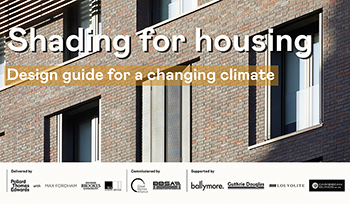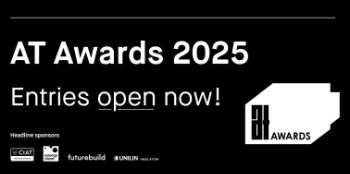The future of the HVAC and building controls industry
This text originally appeared as a BSRIA article, BSRIA Diamond Group Forum – A glimpse of the future? written by Jeremy Towler and published in March 2015.
How buildings can improve productivity and wellbeing will continue to be one of the most researched questions over the next decade. This touches all aspects of building design, construction, use, and maintenance. It also relates to the relationship of buildings with their immediate environment as well as their connection to the wider world. There is a lot changing in this industry and the players need to be aware of this and decide how they will respond. They need to evolve, move up the value chain, embrace new technologies, develop the necessary processes, and build the necessary skills.
Responding to this, BSRIA held a 60th anniversary “Diamond Group Forum” with senior executives at the AHR Expo in Chicago in January 2015 to discuss and debate the changing landscape around the design and use of buildings, their evolution, and to uncover how the heating, ventilation and air conditioning (HVAC) and building controls industry should be shaped in future in order to best respond to client needs and prepare for the positive and profitable development of the businesses that support it.
The event brought together approximately 30 senior executives from major players representing a mix of manufacturers, specifiers and end users in the industry. The forum, which was opened by BSRIA CEO, Julia Evans facilitated active debate and networking.
Following three summary presentations on HVAC and smart control technology by experts from BSRIA World Market Intelligence, the participants broke out into several workshop groups to address the following key questions:
- What do you think are the biggest, most relevant changes in buildings now and over the next 10 years?
- What will be the impact on our industry?
- What products and services will be required in the future?
The majority of participants were from North American organisations, with a small number from Europe and Asia. So it may be assumed that the many insightful conclusions had a North American focus, even though many relate to issues of international relevance. Amongst the many topics discussed, some of the main conclusions are summarised below.
- Participants concluded that the march of green construction and sustainability will continue, aided by regulation and integrated building design. Increasingly, buildings will need to adapt to people – up to now it has been the other way around.
- The Internet of Things is already seen as a reality and combined with analytics and big data, has the potential to deliver radically improved value for building owners and occupants, whilst spawning a host of new value streams for suppliers.
- The team still see some barriers, such as how best to finance projects and there is continued concern around grid stability and energy prices.
- New challenges will undoubtedly appear, not least the need to understand how new building designs work and to understand the challenge of more complex building systems. There is often a disconnect between building use and how control systems are applied and this needs to be addressed. At the same time there is a need for smarter, integrated construction practices.
- One of the most important challenges facing the industry is the shortage of people educated to understand the new types of technology. This needs to be tackled and new ways need to be found for engaging the younger generation with our industry.
- New competitors will enter the market, not least from the IT and software fields and industry needs to develop new partnerships, for example to bridge the gap between the HVAC and the IT world.
- Smart technology, in the form of smart, self-learning and self-diagnosing products is emerging as well as building data capture, software based analytics and an increasing proportion of applications going to the “cloud”.
- There is a growing need for devices to be interconnected and converged onto common platforms and networks, with increased adoption of standards for open connectivity. Cybersecurity for building systems is currently a major weakness and consequently has moved rapidly up the agenda. It represents a threat to development of the building controls industry but can be turned into a new business opportunity.
- Suppliers need to sell solutions and focus more on lifecycle costing. A migration of controls onto the HVAC equipment, delivered as a single package, with a simple man/machine interface, is expected to become more prolific. In the next stage, these packaged solutions will be connected to the cloud and the service business model may have to change in the future.
Above all, the products of the future should be designed with the small and medium building retrofit market in mind. These represent the vast majority of buildings and floor space.
--BSRIA
Featured articles and news
Shading for housing, a design guide
A look back at embedding a new culture of shading.
The Architectural Technology Awards
The AT Awards 2025 are open for entries!
ECA Blueprint for Electrification
The 'mosaic of interconnected challenges' and how to deliver the UK’s Transition to Clean Power.
Grenfell Tower Principal Contractor Award notice
Tower repair and maintenance contractor announced as demolition contractor.
Passivhaus social homes benefit from heat pump service
Sixteen new homes designed and built to achieve Passivhaus constructed in Dumfries & Galloway.
CABE Publishes Results of 2025 Building Control Survey
Concern over lack of understanding of how roles have changed since the introduction of the BSA 2022.
British Architectural Sculpture 1851-1951
A rich heritage of decorative and figurative sculpture. Book review.
A programme to tackle the lack of diversity.
Independent Building Control review panel
Five members of the newly established, Grenfell Tower Inquiry recommended, panel appointed.
Welsh Recharging Electrical Skills Charter progresses
ECA progressing on the ‘asks’ of the Recharging Electrical Skills Charter at the Senedd in Wales.
A brief history from 1890s to 2020s.
CIOB and CORBON combine forces
To elevate professional standards in Nigeria’s construction industry.
Amendment to the GB Energy Bill welcomed by ECA
Move prevents nationally-owned energy company from investing in solar panels produced by modern slavery.
Gregor Harvie argues that AI is state-sanctioned theft of IP.
Experimental AI housing target help for councils
Experimental AI could help councils meet housing targets by digitising records.
BSRIA Occupant Wellbeing survey BOW
Occupant satisfaction and wellbeing tool inc. physical environment, indoor facilities, functionality and accessibility.























